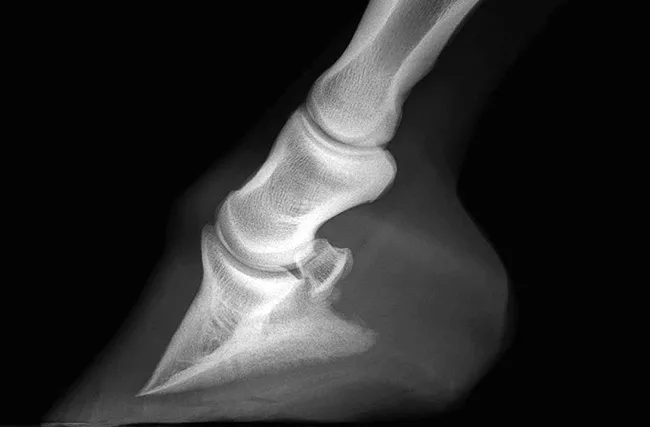American Farriers Journal
American Farriers Journal is the “hands-on” magazine for professional farriers, equine veterinarians and horse care product and service buyers.

— Minnesota Farrier
A: It’s difficult to “fix” a clubfoot, even with surgery, but they can be managed quite effectively depending on the severity.
A true clubfoot conformation has a genetic component and is associated with a flexural deformity (flexion) of the distal interphalangeal joint (coffin joint). It’s characterized by a broken forward hoof-pastern axis, which is a reflection of a hoof capsule where the angle of the dorsal hoof wall is greater than the angle of the dorsal pastern.
This broken forward hoof-pastern axis or flexural deformity is created by some degree of shortening of the musculotendonous unit (deep digital flexor tendon [DDFT] and associated muscle bellies) causing the distal interphalangeal joint (DIP) to be drawn into a flexed position. The shortening of the musculotendonous unit causes a disparity of hoof wall growth with more growth being produced at the heel than at the toe. The excess hoof wall growth at the heel is to compensate for the shortened musculotendon unit.The frog generally recedes due to excess hoof wall growth at the heels, such that the energy of impact is assumed by the hoof wall, bypassing the soft tissue structures and transferring the load directly onto the bones of the digit through the laminar interface. The excess growth at the heels places the distal phalanx (P3 or coffin bone) in an abnormal position within the…